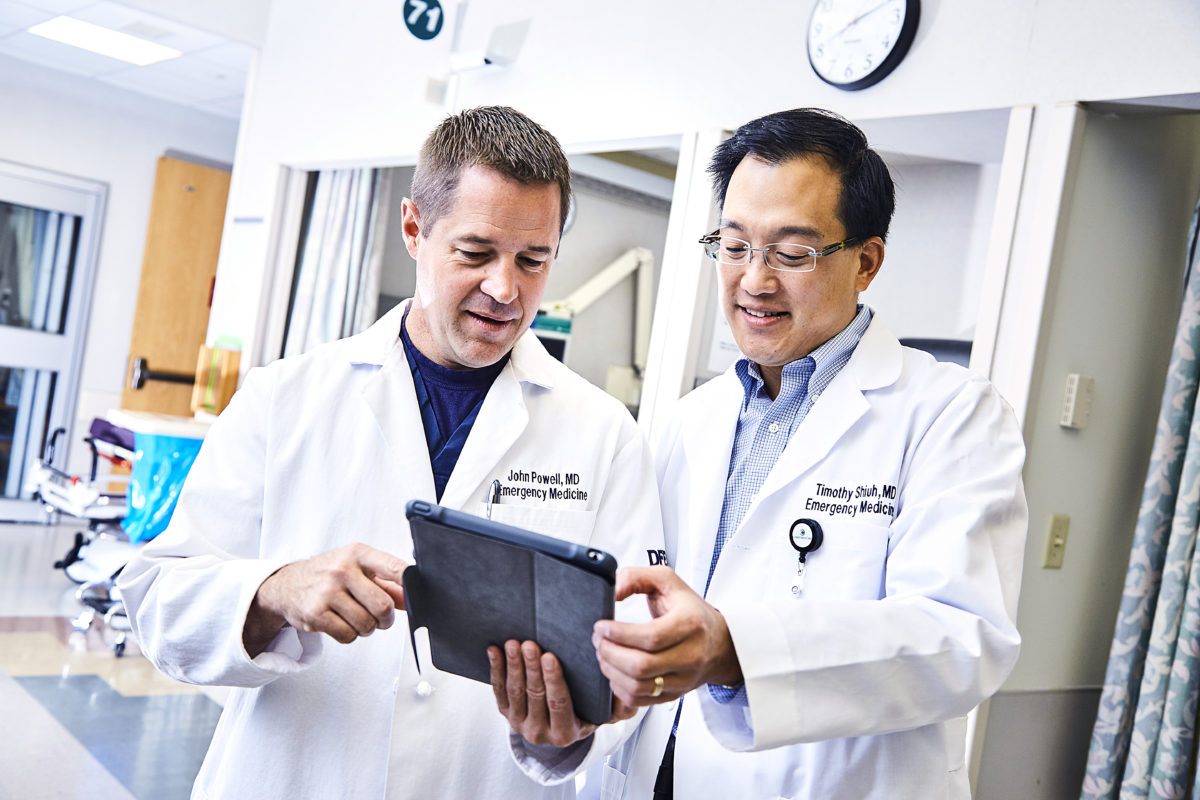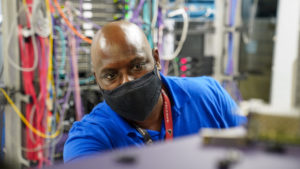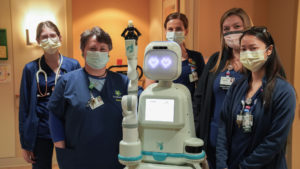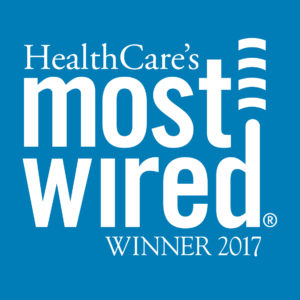 Christiana Care Health System is harnessing its information technology expertise to engage patients in their care, streamline the services they receive and tailor care to suit each individual’s needs. Christiana Care has again been recognized by the American Hospital Association, in its 19th annual Health Care’s Most Wired Survey, as a health system on the forefront of adoption and effective use of technology.
Christiana Care Health System is harnessing its information technology expertise to engage patients in their care, streamline the services they receive and tailor care to suit each individual’s needs. Christiana Care has again been recognized by the American Hospital Association, in its 19th annual Health Care’s Most Wired Survey, as a health system on the forefront of adoption and effective use of technology.
“Technological innovation helps us orient ourselves toward providing value-based care,” said Randall Gaboriault, MS, chief information officer and senior vice president of innovation and strategic development. “We’re investing in the resources to engage our patients in their care by giving them the ability to take ownership over their health records and communicate with providers on their own terms.”
Christiana Care is one of only about 425 hospitals, out of more than 5,000 in the country, recognized for its information technology adoption with the Most Wired designation.
“One of our biggest strengths is that we are working closely with our electronic health record system supplier, Cerner, to make the system better, not just for us, but for our entire industry,” said Timothy Shiuh, M.D., Christiana Care’s chief medical information officer.

For example, Christiana Care was the first health system in the country to pioneer a new, multidisciplinary discharge workflow it developed with Cerner. The effort grew out of the realization that existing discharge instructions were confusing to patients. A clinical team improved the appearance and design of the new instructions, which were standardized across departments. Meanwhile, a Cerner team used that process to help roll out the enhanced system functionality for all of its clients.
“We have furthered our investment in our integrated electronic health record system through a recently signed multiyear strategic alignment with Cerner, one of the premiere health information technology suppliers,” said Lynne McCone, vice president of IT Application Services for Christiana Care. With this unique alignment with Cerner, Christiana Care is finding new ways to apply the judicious use of technology to meet its strategic goals — especially improving the coordination and delivery of care while reducing its cost.
One way to lower costs is to consolidate all of a patient’s records in one place, so that a clinician quickly and easily can see what’s been done before. For example, the integrated Cerner electronic health record system captures health information at Christiana Care’s Center for Heart & Vascular Health and Medical Aid Units. During the coming months, Christiana Care’s primary care practices and specialty practices will merge under the new Cerner electronic health record system.
Convenient access to a patient’s medical records is one way to avoid duplication of care, according to John T. Powell, M.D., associate chair of Emergency Medicine. When he scans a patient’s records, he can study previous orders and results. Dr. Powell also can click an icon in the Cerner tool that opens the patient’s chart in the Delaware Health Information Network. He then can choose to pull forward information from care delivered in non-Christiana Care settings into the patient’s Christiana Care electronic medical record.
“I don’t have to leave the health record and use a different login,” he said. “They’ve eliminated that barrier.”
For example, if a patient enters the emergency department with a severe headache, Dr. Powell may decide to order a CT scan. But if he notices the patient already had such a scan in the past few days, he may decide it’s not necessary to do another.
“If I can see what other people have done in the past, that might allow me to streamline their care,” he said.
Technology improvement is repetitious, Dr. Powell said, and Christiana Care’s partnership with Cerner allows it to keep improving.
In one case, when lab reports were pulled into patients’ records, there was no way to tell at a glance if the readings were within normal ranges. Because Christiana Care works with Cerner, it was able to make the small but meaningful change of color-coding these values in patients’ charts, just as they are in the original lab data.
Data security means patient safety
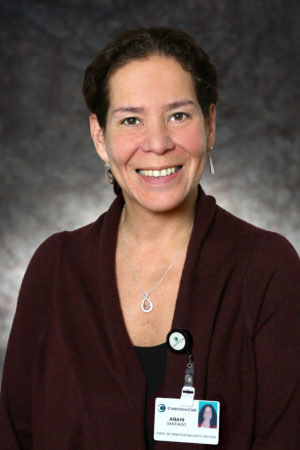
Anahi Santiago, chief information security officer for Christiana Care, said data security is, at its core, more about patient safety than technology.
“Everything we do, day in and day out, is to protect our patients and their safety,” Santiago said. “Just as clinicians worry about patient safety, so do we.”
The No. 1 threat to systems continues to be phishing — fraudulent e-mails to employees that trick them into clicking an innocuous link that is meant to steal sensitive information.
To help employees remain vigilant, Christiana Care uses a tool that sends out quarterly e-mails to its users that are designed to resemble fraudulent messages.
“We don’t make the emails look very good,” Santiago said. “We still make it a little bit obvious that they’re not legitimate.”
If users click the link — to, perhaps, claim their package from “EdFex” — they receive a message about the deception and are given information on how to detect fraudulent e-mails.
“Hackers are going after people,” Santiago said, “they’re not going after the technology.”
Christiana Care also prepares its employees for what happens when the technology doesn’t work, as in a mass Internet outage or network unavailability.
Paving a digital path
Tasked with decreasing unnecessary variation in care, Christiana Care’s service lines and information technology professionals are collaborating to embed logic into the electronic health record system to guide clinicians toward optimal care using clinical pathways. These pathways can be tailored to each patient’s needs and respond to their individual circumstances. It is, Dr. Shiuh said, the next level of advanced decision support.
Another effort uses the patient’s real-time data to predict clinical deterioration and reduce preventable death. It starts with an algorithm created by the Christiana Care Value Institute to predict hospital patients at risk of a medical emergency. That algorithm is at the heart of the Christiana Care Early Warning System, which harnesses vital signs, nursing documentation and other patient data to alert physicians when a patient is at risk and may require a higher level of observation or care.
Soon, a patient’s health records will be communicating directly with their IV pumps, Dr. Shiuh said. As it happens today, a nurse programs the pumps based on a patient’s health records. Later this fall, this process will be automated so that the health record software can communicate directly with the IV pump and “order” drug administration.
On the agenda for the coming year are new ways to help patients participate in their care.
The team is creating new ways for patients communicate with their providers, schedule appointments and manage their health records. That way, they can validate the information in those records and upload data they collect, such as readings from a blood glucose monitor.
It’s part of the drive toward a value-based approach that measures success by maintaining health instead of by counting visits, tests and procedures.
